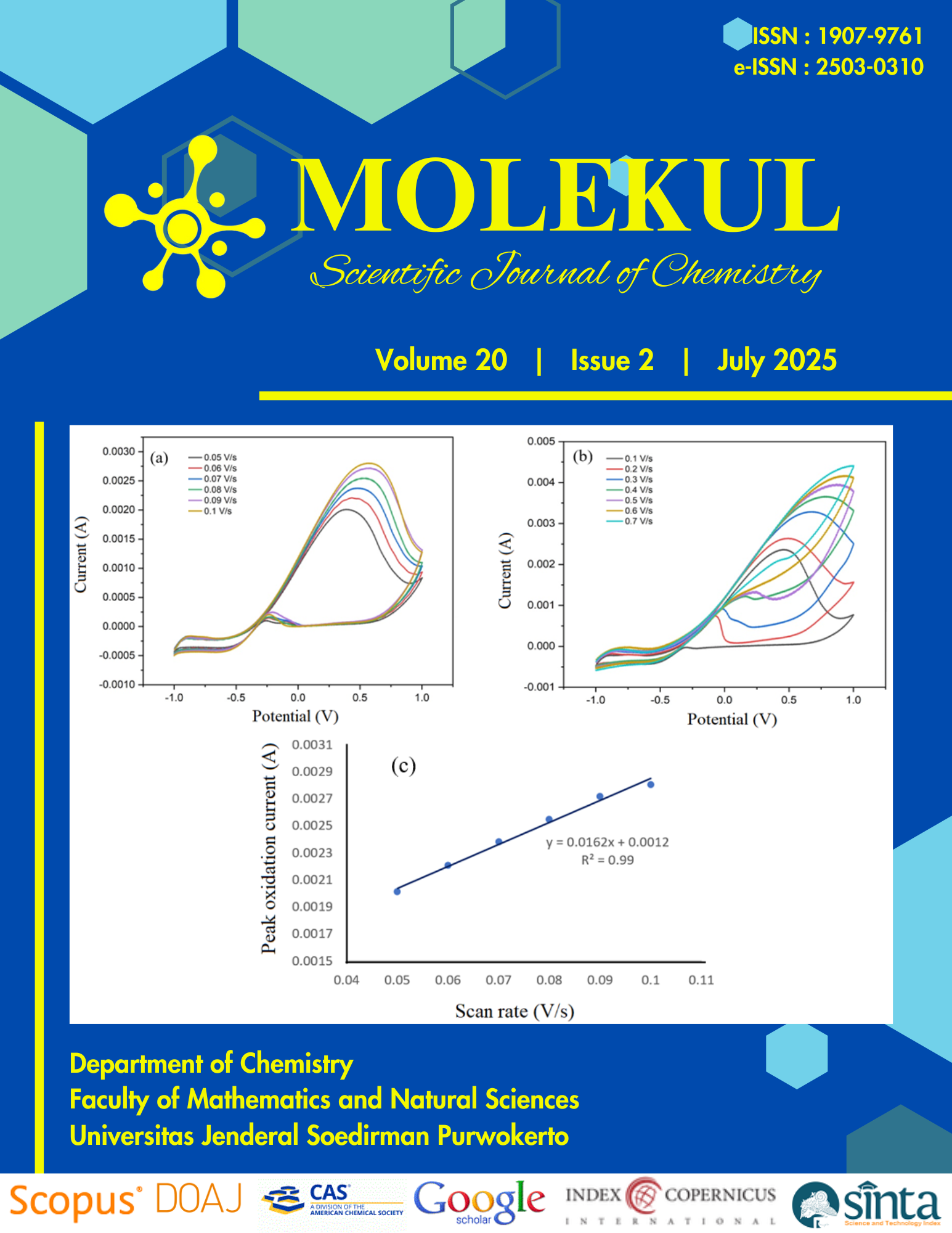Electrochemistry Response of Platinum Powder Composite as Electrode for Sensor Capsaicin
Platinum Powder Composite as Electrode
Abstract
ABSTRACT. So far, the concentration of capsaicin in food has been determined using the tongue. Several analytical methods were developed to determine the concentration of capsaicin, but they have many drawbacks such as being expensive, long analysis time, requiring hazardous chemicals, and being difficult to operate. This research aims to prepare a material that has high stability and excellent electrocatalytic activity to determine capsaicin concentration. The research was conducted by preparing powdered platinum electrodes mixed with polyvinyl chloride (PVC). The mixture of the two materials is added with tetrahydrofuran (THF), dried, and pressed so that it becomes a solid electrode which is a platinum powder composite (PPC). These electrodes are used as working electrodes for the analysis of capsaicin in food sauce. The results showed that the NaOH electrolyte was the best electrolyte for capsaicin analysis using platinum powder composite electrodes. The PPC electrode showed good test method validation results, namely recovery of 108.69%, LOD, and LOQ of 5.9 x 10-1 mM and 19.9 x 10-1 mM, respectively. The capsaicin concentration in the food sauce was 0.029 M in a 0.5 g sample.
Keywords: Capsaicin, composite, cyclic voltammetry, platinum powder, sensor
Authors agree with the statements below:
- Authors automatically transfer the copyright to the MOLEKUL journal and grant the journal right of first publication with the work simultaneously licensed under a Creative Commons Attribution 4.0 International License (CC BY 4.0).
- Authors are able to enter into separate permission for the non-exclusive distribution of the journal's published version of the work (e.g., post it to an institutional repository or publish it in a book), with an acknowledgment of its initial publication in this journal.













